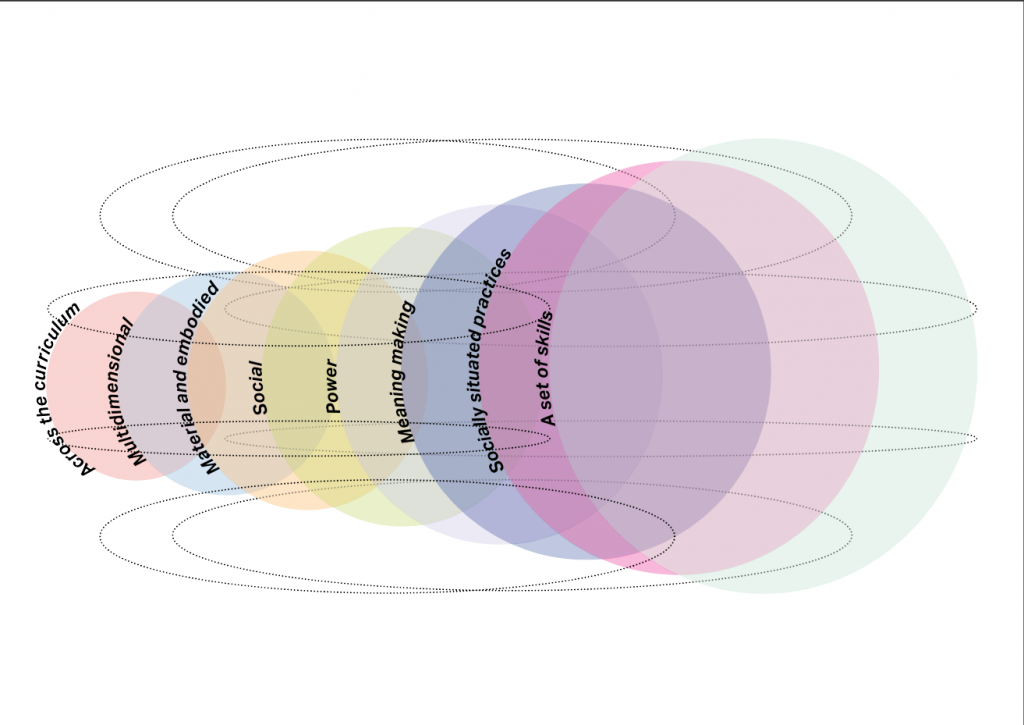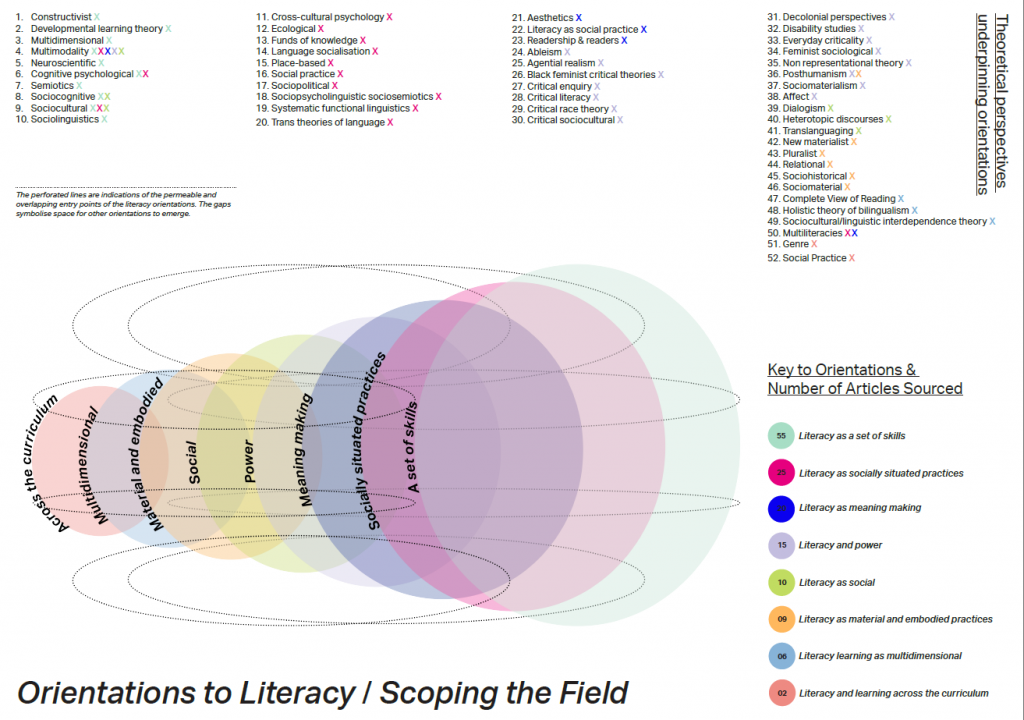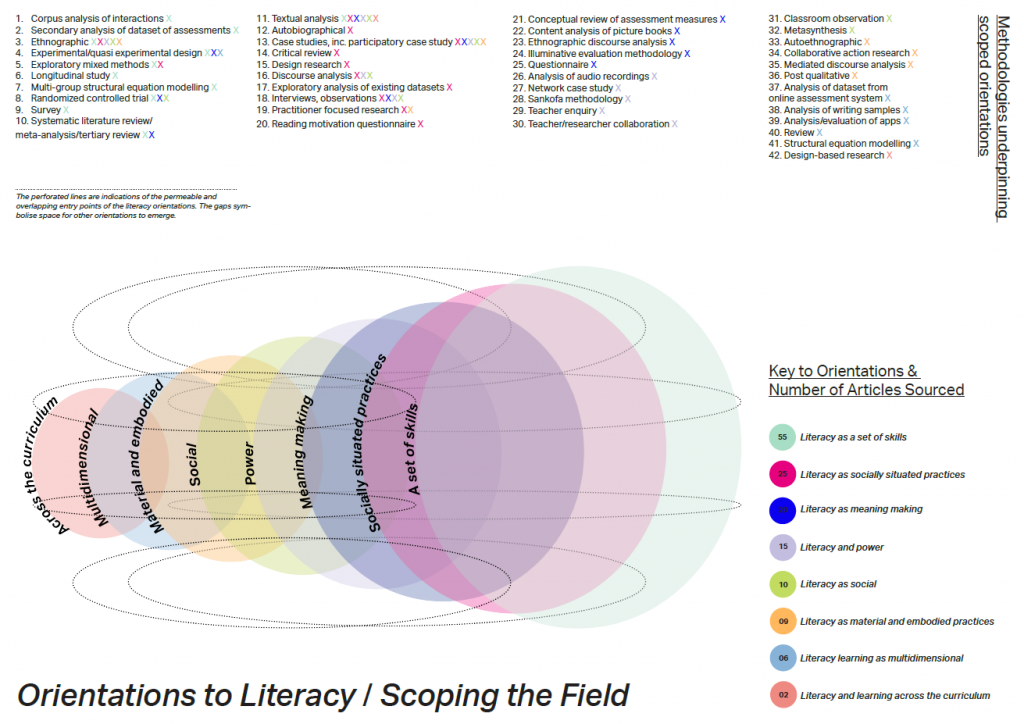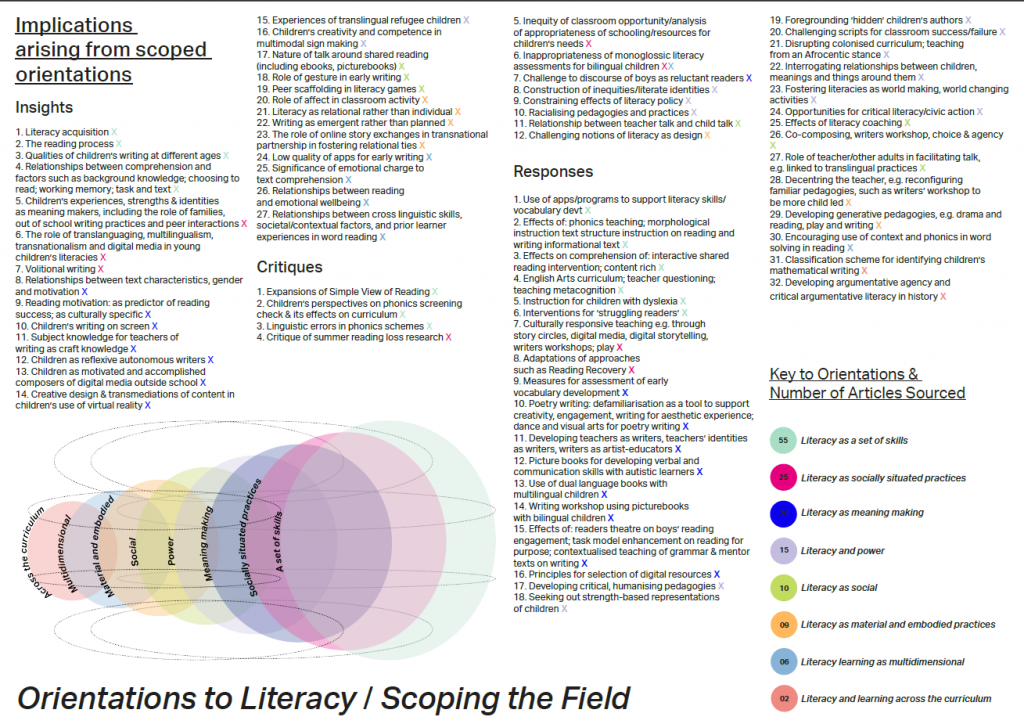WORKING PAPER
This Working Paper was written to inform the work of the Research Mobilities in Primary Literacy Education project. It surveys a range of types of literacy research that might be relevant to literacy education and argues that a range of research about literacy is valuable to primary teachers.
Additionally, we worked with designer Layla Gharib to visually represent this research to new audiences. These images aim to invite different interpretations, questions and conversations.
(Click images to enlarge)
DISCUSSION PAPER
Engaging with research to inform policy and practice in literacy education: A discussion paper
There is a vast range of literacy research that has relevance to literacy education. This discussion paper maps various ways in which literacy research can inform policy and practice and raises important questions to address in strengthening relationships between literacy research and education.
OPEN-ACCESS BOOK
Research Mobilities in Primary Literacy Education: How Teachers Encounter Research in An Age of Evidence-Based Teaching [due to be published in 2024/2025]
METHODOLOGICAL RESOURCE
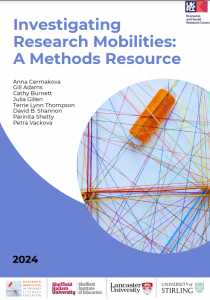
Investigating research mobilities: A methods resource
This methodological resource outlines a suite of methods used as part of the Research Mobilities project. This resource offers our thinking about the methods we used and is aimed at researchers of research mobilities and beyond.
We also hope that, more broadly, our methodologies will be of interest to researchers in the field of knowledge mobilisation but also social sciences researchers in the broader sense, whether they are interested in the methodological assemblage or any of the methods on their own. Most of the examples we use here to illustrate how the methods work and/or how we implemented them are from the Research Mobilities project; however, they are chosen so that they are of a more generalisable nature rather than too project specific.
You can get an overview of the different methods used in the video below:
